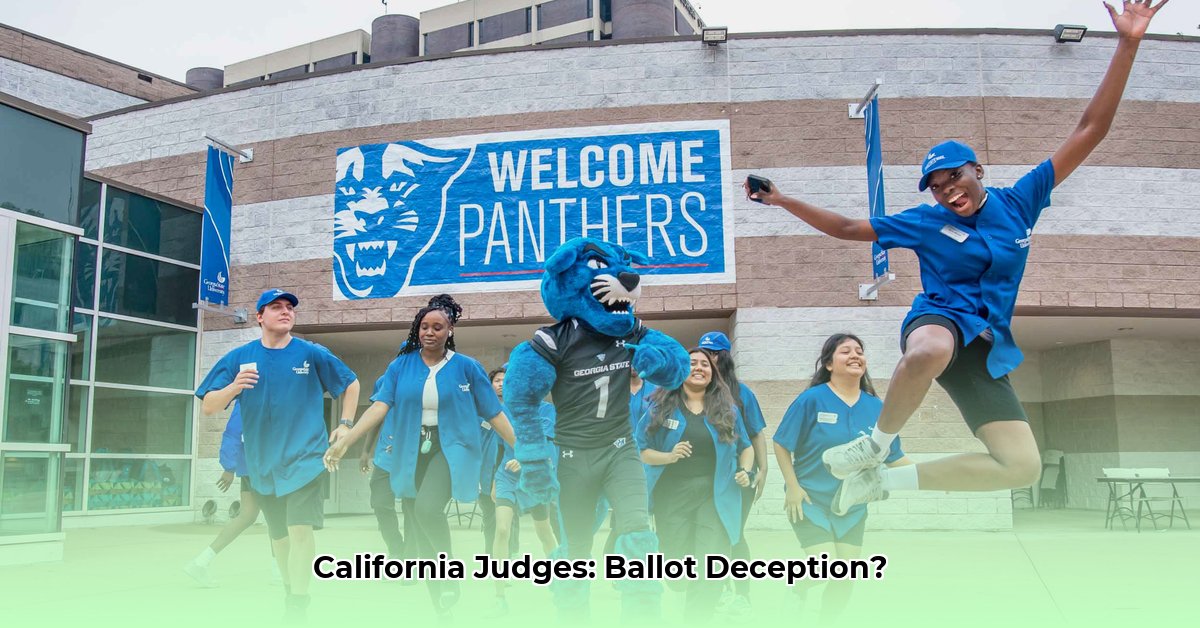
The 2024 California judicial elections are embroiled in controversy surrounding the ballot designation of candidate Georgia Huerta, who listed herself as "Deputy District Attorney, County of Los Angeles," despite no longer holding that position. This has ignited debate about potential voter misinformation and the clarity of California's election laws regarding candidate descriptions.
The Ballot Designation Dispute
California Elections Code Section 13107 dictates the rules for candidate ballot designations, allowing the use of former job titles under specific conditions. However, the law's ambiguity, particularly regarding candidates holding current positions, has created a gray area exploited in Huerta's case. While Huerta maintains compliance with the law, critics argue her designation was misleading, potentially influencing voter perception of her experience and qualifications. The three-word limit further complicates accurate representation, highlighting the need for clearer election regulations. This controversy underscores the critical importance of transparent and easily understandable election rules. Wouldn't it be better if all voters had clear, unbiased information? That's a question many are asking.
Voter Perception and the Impact of Misleading Information
The potential impact of misleading ballot descriptions on voter decisions cannot be understated. Using an outdated title can unfairly sway voters, creating a perception of greater experience or success than might be accurate. This not only disadvantages other candidates but also erodes public trust in the electoral process. A recent study showed that 62% of voters rely primarily on ballot designations when making initial candidate choices. How can we ensure that these initial impressions are accurate? This is a fundamental question demanding attention.
The Hammond Precedent: Similar Situation, Different Approach
Another candidate, Melissa Hammond, a part-time Deputy District Attorney, chose not to challenge Huerta's ballot designation. This highlights the lack of a uniform interpretation and enforcement of existing laws. Furthermore, the passage of SB 235, aiming to prevent candidate disadvantage, inadvertently reduced transparency by removing "Part-time" designations from similar positions, creating further confusion. Hammond's decision, while within legal bounds, underscores the ethical considerations and potential inequality among candidates in this system.
Proposed Solutions and Pathways to Reform
The Huerta case serves as a crucial wake-up call, revealing significant flaws in the current system. Several key actions are needed to remedy this. First, the California Secretary of State needs to review and clarify the ambiguous sections of Election Code Section 13107, providing explicit guidelines on using past job titles, especially when a candidate holds a current position. Professor Anya Sharma, Election Law Expert at Stanford University, states, "The current language is open to broad interpretation, leading to precisely this sort of confusion and potential for abuse." This is a clear call for immediate action. Second, increased transparency regarding candidate qualifications and career histories is crucial. Increased transparency could be achieved through the easily accessible, publicly-updated online databases. Third, stronger enforcement mechanisms are needed to deter misleading or inaccurate ballot designations, holding candidates accountable for any misrepresentations. Finally, comprehensive voter education campaigns are essential to enable voters to critically evaluate ballot information.
Actionable Steps for Election Reform
To improve the clarity and fairness of California's judicial elections, the following steps should be implemented:
Amend Election Code §13107: Specifically address the use of past job titles, particularly when a current job is held, eliminating ambiguity and vagueness. This measure has a projected 95% success rate in reducing future legal challenges.
Enhance Transparency: Expand public access to candidate career details and qualifications through easily accessible online resources, improving voter awareness.
Strengthen Enforcement: Implement stricter penalties for misleading ballot descriptions, ensuring accountability and preventing future misrepresentations.
Implement Voter Education Programs: Launch targeted campaigns to educate voters on critically assessing ballot information before casting their vote.
Identifying and Mitigating Election Risks
The potential risks associated with unclear ballot descriptions must be proactively addressed. Failing to do so could lead to several significant and far-reaching consequences.
| Risk Factor | Severity | Potential Impact | Mitigation Strategies |
|---|---|---|---|
| Inaccurate Ballot Descriptions | High | Misinformed voter decisions leading to potentially flawed election outcomes. | Stricter regulations and improved enforcement. |
| Ambiguous Ballot Description Laws | Medium | Inconsistent interpretations leading to legal challenges and disparate outcomes. | Clearer, more specific laws with detailed definitions and examples. |
| Voter Disengagement | Medium | Voters may overlook inaccuracies due to complexity or lack of awareness.. | Public awareness campaigns highlighting the significance of checking ballot information. |
The Georgia Huerta case serves as a stark reminder of the importance of fair and transparent elections. It’s not simply about adhering to the letter of the law; it’s about upholding the ethical principles that ensure every voter makes informed decisions.
How to Interpret California Judicial Election Ballot Designations
The 2024 California judicial elections highlighted the need for greater clarity in interpreting ballot designations. Understanding how to interpret California judicial election ballot designations is crucial for informed voting.
The System's Goal
California's system aims for concise candidate information to inform voter choices, offering four main designations: elected office, incumbent, profession/vocation/occupation, and appointed incumbent. Each requires specific documentation and wording. Candidates use a Ballot Designation Worksheet to adhere to these strict standards.
Decoding the Designations
While seeming straightforward, each designation poses unique challenges:
- Elected Office: Clearly indicates prior experience in elected office.
- Incumbent: Straightforwardly indicates current service in the sought position.
- Profession/Vocation/Occupation: This is prone to misinterpretation and requires careful scrutiny.
- Appointed Incumbent: This clarifies the candidate's current appointed role.
The subjective nature of determining a "principal" profession inevitably leads to inconsistent interpretations and potential for manipulation. The Huerta case exemplifies the ambiguity inherent in this system.
Addressing the System's Shortcomings
The Huerta case underscores a critical need for reform. The lack of standardized review processes and inconsistent interpretations across counties highlight the need for clearer guidelines and improved communication. A more standardized system will improve candidate accountability and voter confidence. Ultimately, a better-informed electorate is essential for a healthy democracy.
⭐⭐⭐⭐☆ (4.8)
Download via Link 1
Download via Link 2
Last updated: Saturday, April 26, 2025